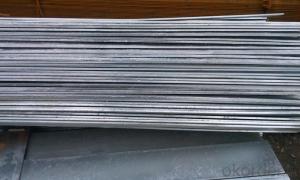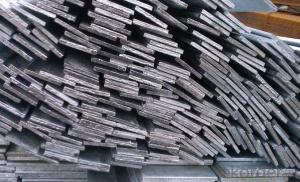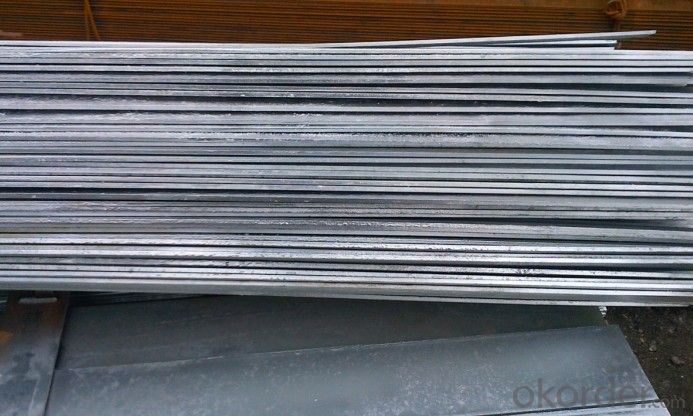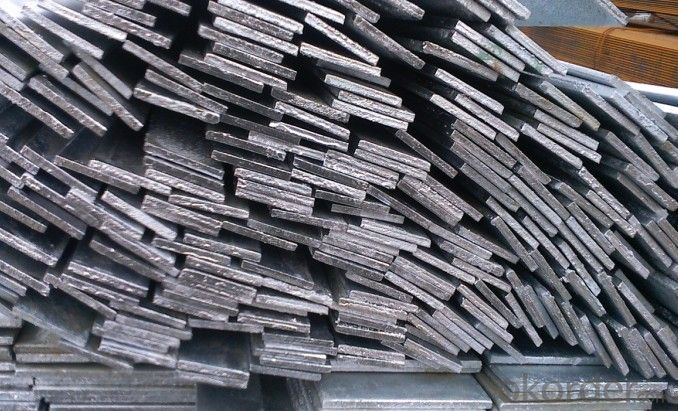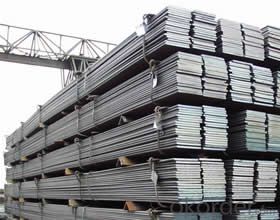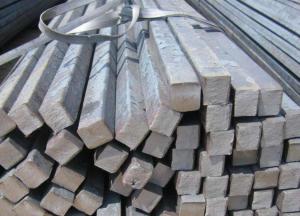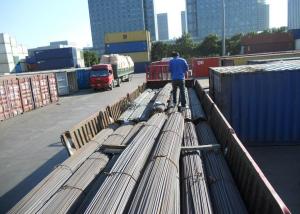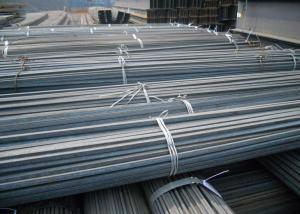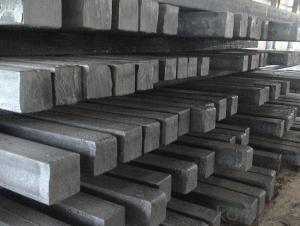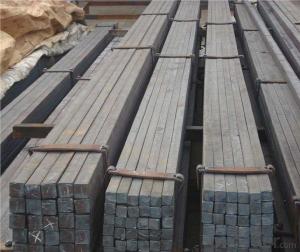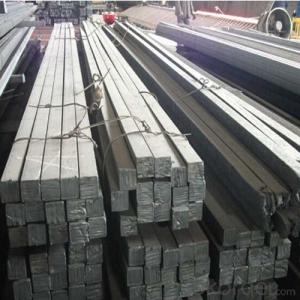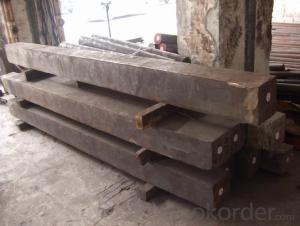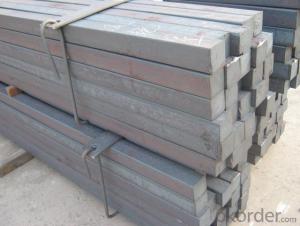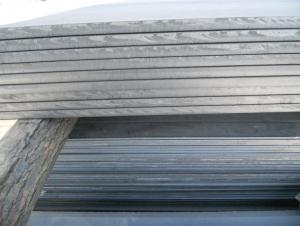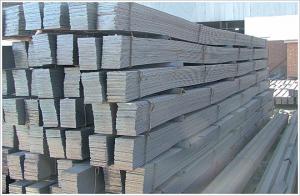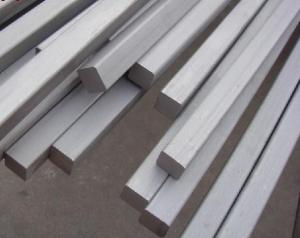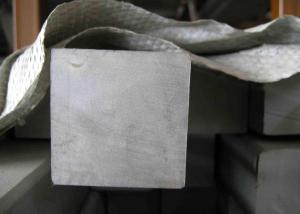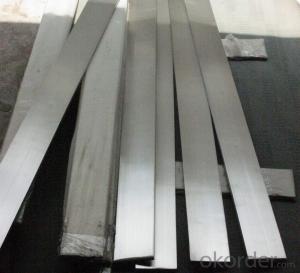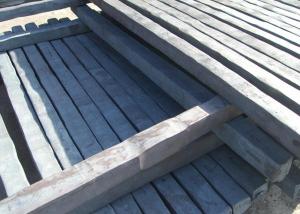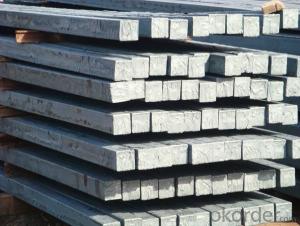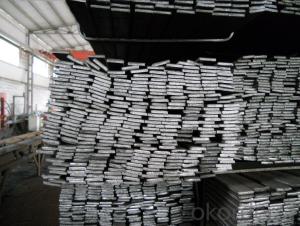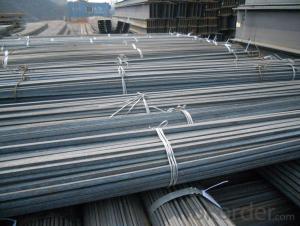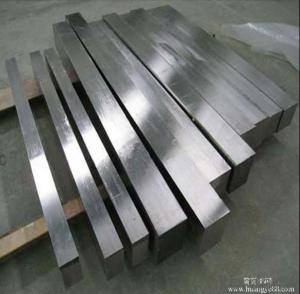Cold drawn steel flat bar ; flat steel
- Loading Port:
- Tianjin
- Payment Terms:
- TT OR LC
- Min Order Qty:
- 50 m.t.
- Supply Capability:
- 10000 m.t./month
OKorder Service Pledge
OKorder Financial Service
You Might Also Like
Specifications
Commodity: Carbon Steel Flat Bar
Standard: GB, JIS, ASTM,
Material: Q235, SS400 or Equivalent
Brand name: FLATSPACE
Origin place: China
Thickness: 3mm-30mm
Width:20mm-200mm
Length: Max 12m
Certification: SGS/BV
Chemical composition
Alloy No | Grade | Element(%) | ||||
C
| Mn
| S
| P
| Si
| ||
Q235
|
B
|
0.12—0.20 |
0.3—0.7 |
≤0.045 |
≤0.045
|
≤0.3
|
Physical properties
Alloy No | Grade | Yielding strength point(Mpa) | Tensile strength (Mpa) | Elongation after fracture(%) | ||||||
Thickness (mm) | Thickness (mm) | |||||||||
≤16 | >16--40 | >40--60 | >60--100 | ≤16 | >16--40 | >40--60 | >60--100 | |||
≥ | ≥ | |||||||||
Q235 |
B |
235 |
225 |
215 |
205 |
375--500 |
26 |
25 |
24 |
23 |
Above sheets show the technical data of Q235,we can also provide other materials similar to Q235.
Usage/Applications
Widely used for construction;
Machinery manufacturing;
Iron tower steel structure;
Shipbuilding; Steel grating;
Staircase;
Bridge;
Viaduct;
Railway spare parts;
Boilers making etc.
Packaging & Delivery
Packaging Details: The Steel Flat Bars are packed in bundles and loaded in 20 feet/40 feet container, or shipped by bulk cargo ,also we can do as customer's requirements.
Delivery Details:30~45 days upon the receipt of buyer payment by T.T. or L/C.
Production
The Carbon Steel Flat Bar is made through three processes:
1.Feeding the material: Feeding the row material (the steel plate) to Slitting Line.
2.Slitting:The steel plate would be slitted into expected width by lengthways cutter.
3. Leveled and cutting: The plat bar would be ground into level by the grinder and then cut into required length.
- Q: What are some common uses for a steel square in metal fabrication?
- Some common uses for a steel square in metal fabrication include measuring and marking angles, checking the squareness of corners, aligning and squaring up materials, and laying out precise measurements and dimensions.
- Q: Can a steel square be used for checking the squareness of window openings?
- Window openings can have their squareness checked using a steel square. This tool, also referred to as a framing square or carpenter's square, is highly versatile in carpentry and construction. It serves various purposes, including the examination of object squareness. When applied to window openings, the steel square guarantees that the corners of the window frame align perfectly at 90-degree angles. By positioning the steel square against the window opening's corners, one can effortlessly determine if adjustments are needed. The precise right angles and straight edges of the steel square establish it as a dependable tool for assessing window opening squareness and ensuring accurate installation.
- Q: Can a steel square be used for measuring angles other than right angles?
- Measuring angles other than right angles is not possible with a steel square. This tool, alternatively called a try square or a carpenter's square, is specifically designed to ensure accurate measurements of right angles. Its construction consists of a metal blade with a handle forming an L-shape at a right angle. The main purpose of a steel square is to verify the squareness of corners, mark right angles, and guarantee precise 90-degree angles in carpentry and other construction work. While it might be feasible to estimate or approximate other angles using a steel square, it cannot be relied upon as a precise or dependable tool for measuring angles that deviate from right angles. To measure angles of varying degrees, it is advisable to employ specialized tools like protractors or angle finders.
- Q: Can a steel square be used for checking the squareness of a miter saw blade?
- Using a steel square is not suitable for verifying the squareness of a miter saw blade. Although a steel square is effective for measuring and assessing right angles, it lacks the specific design to accurately determine the squareness of a miter saw blade. Miter saws possess their own mechanisms and adjustments to guarantee the blade's perfect perpendicularity to the table. To verify the squareness of a miter saw blade, it is advisable to utilize a specialized tool known as a squareness gauge or a designated square explicitly created for miter saws. These tools are intended to deliver precise measurements and angle checks, guaranteeing precise and square cuts.
- Q: Can a steel square be used for setting up a planer?
- Certainly! A planer can be set up using a steel square. In woodworking and carpentry, a steel square is a versatile tool that is commonly employed to guarantee precision and accuracy in various tasks. One of its uses is in the setup of machinery, like a planer. When preparing a planer, a steel square can be utilized to verify that the tables, fences, and blades are all perfectly square and parallel. This verification is crucial for achieving smooth and precise planing outcomes. Moreover, before planing, a steel square can also be employed to ascertain the squareness of the workpiece, ensuring proper alignment and even planing. All in all, a steel square is a valuable tool that is certainly capable of setting up a planer and ensuring its optimal performance.
- Q: How do you use a steel square to determine the length of a fence?
- To determine the length of a fence using a steel square, one must follow a few simple steps. First, locate a flat and level surface where an accurate measurement of the fence can be obtained. Place the steel square on the ground or a sturdy table. Then, position one arm of the steel square against a fence post or any fixed point on the fence, ensuring that it is perpendicular to the fence line. Extend the other arm of the square along the fence line. Subsequently, proceed to move the square along the fence line, making sure to keep the arms aligned with the fence and perpendicular to each other. While moving, take note of the number of times the square's position needs to be adjusted in order to reach the end of the fence. After each adjustment, mark the spot where the extended arm reaches. Once the end of the fence is reached, count the total number of marks made. Multiply this number by the length of one side of the square to determine the total length of the fence. For instance, if one side of the square measures 12 inches and 20 marks were made, the total length of the fence would be 20 x 12 = 240 inches or 20 feet. Utilizing a steel square in this manner allows for precise measurements and ensures that the fence is straight and properly aligned.
- Q: Can a steel square be used for laying out a foundation?
- Laying out a foundation can be achieved by utilizing a steel square. Known as a framing square or carpenter's square, this versatile tool plays a crucial role in carpentry and construction. It serves to measure and mark angles, as well as to assess the accuracy and squareness of lines and corners. To guarantee the squareness of corners and angles during foundation laying, the steel square comes into play. Its application involves measuring and marking the dimensions of the foundation, ensuring precise and accurate placement with the correct shape. The straight edges and right angles of the steel square render it an ideal tool for this specific task. Furthermore, the steel square finds usefulness in the layout of additional foundation elements like anchor bolts or anchor plates. By leveraging the steel square for measuring and marking the positions of these elements, their alignment can be precisely executed, harmonizing with the overall foundation layout. All in all, the steel square holds immense value in the process of foundation laying. Its usage guarantees accuracy, ensuring proper alignment and squareness of the foundation.
- Q: What are some common measurements that can be taken with a steel square in plumbing rough-ins?
- Some common measurements that can be taken with a steel square in plumbing rough-ins include determining angles for cutting pipes, checking for squareness and alignment of pipes and fixtures, measuring distances and dimensions accurately, and ensuring proper fit and alignment of pipes and fittings.
- Q: How do you use a steel square to measure and mark 33.75-degree angles?
- Achieving precision when working with different materials or projects can be ensured by utilizing a steel square and meticulously measuring and marking the desired 33.75-degree angle with the following steps: 1. Initiate the process by placing the steel square on a level surface, guaranteeing its proper alignment. 2. Identify the 45-degree angle on the square, typically indicated by a small notch or line. 3. Align the square in such a manner that the 45-degree angle line runs parallel to the edge of the material or surface being worked on. 4. Employ a protractor or angle measuring tool to gauge and designate a 33.75-degree angle on the steel square. 5. Once the correct angle has been determined, employ a marker or pencil to create a small mark on the steel square denoting the desired angle measurement. 6. Commencing from the mark made, employ the square as a guide to extend a straight line across the material or surface being worked on. 7. Prior to proceeding with any cutting or further work, double-check the measurements and marks to ensure accuracy. By meticulously measuring and marking the desired 33.75-degree angle using a steel square, precision can be attained when working with diverse materials or projects.
- Q: How do you use a steel square to mark a line at a specific angle?
- To use a steel square to mark a line at a specific angle, you can follow these steps: 1. First, determine the specific angle you want to mark. This could be an angle measurement you already know or one that you need to calculate. 2. On the steel square, locate the blade and the tongue. The blade is the longer side of the square, while the tongue is the shorter side. 3. Align the blade of the square along the edge of the material or surface where you want to mark the line. Ensure that the blade is parallel to the edge and firmly against it. 4. Next, adjust the position of the square by rotating it until the desired angle is achieved. You can do this by pivoting the square around the point where the blade and tongue intersect, known as the heel of the square. 5. Once you have set the steel square at the desired angle, use a pencil or a scribe to mark the line along the edge of the blade or tongue. Make sure to hold the square securely in place to avoid any movement that could affect the accuracy of the line. 6. After marking the line, double-check the angle measurement to ensure it matches your requirements. You can use a protractor or a digital angle finder to verify the accuracy of the marked angle. Using a steel square to mark lines at specific angles is a practical and precise method, especially in woodworking and carpentry. The square's rigid and straight edges help maintain accuracy, making it a reliable tool for creating angled lines.
Send your message to us
Cold drawn steel flat bar ; flat steel
- Loading Port:
- Tianjin
- Payment Terms:
- TT OR LC
- Min Order Qty:
- 50 m.t.
- Supply Capability:
- 10000 m.t./month
OKorder Service Pledge
OKorder Financial Service
Similar products
Hot products
Hot Searches
Related keywords
